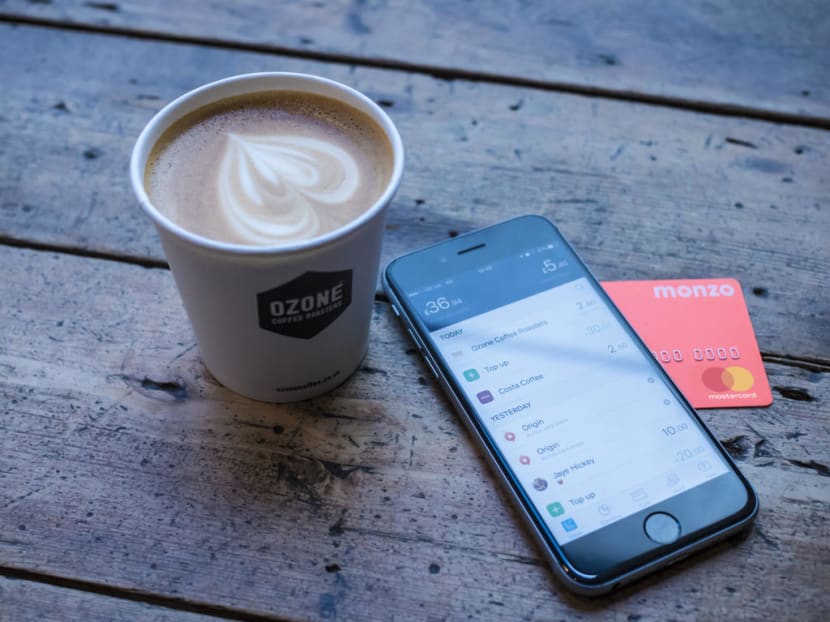Explainer: What’s the big deal about digital banks?
SINGAPORE — The banking industry in Singapore is in for a shake-up as the Monetary Authority of Singapore (MAS) recently kicked off the application process for digital bank licences.

Users of London-based digital bank Monzo can see their expenditure categorised into segments such as clothes, groceries, entertainment and transport. Monthly spending limits can be set for each category.
SINGAPORE — The banking industry in Singapore is in for a shake-up as the Monetary Authority of Singapore (MAS) recently kicked off the application process for digital bank licences.
The high-anticipated move finally came two months after MAS chairman and Senior Minister Tharman Shanmugaratnam announced that the city-state will issue up to five digital bank licences — up to two will be digital full bank licences and up to three will be digital wholesale bank licences.
Digital full banks will be allowed to take deposits from retail customers, while digital wholesale banks will generally cater to small- and medium-sized enterprises and other non-retail segments.
While digital banking is not new as MAS has allowed local lenders to pursue such business models since 2000, what is different this time is that non-banks are also allowed to apply for the licence.
TODAY explains why digital banking has become a buzzword in the financial services sector.
WHAT IS A DIGITAL BANK?
Simply put, a digital bank offers the same type of banking services such as a traditional bank except it operates entirely online without any single physical infrastructure, such as a bank branch.
So customers of a digital bank can control their finances entirely from their smartphones and computers.
Digital banks is seen as the next frontier in terms of innovation in the financial services sector, which is traditionally dominated by large, well-established banks.
In the case of Singapore, the main local players are DBS, Oversea-Chinese Banking Corporation (OCBC) and United Overseas Bank (UOB).
Countries in the European Union as well as Japan and South Korea have already seen the set-up of digital-only banks. Some examples are SBI Sumishin in Japan and Kakao bank in South Korea.
Singapore’s biggest rival in the financial sector, Hong Kong, has already started issuing digital banking licences in March this year.
HOW DIFFERENT IS IT FROM A TRADITIONAL BANK?
Not much, in terms of the range of banking services that customers can have access to.
MAS’ intention is for a digital full bank to eventually be able to conduct all banking businesses as existing banks.
However, it starts off at a “restricted’ stage first, where the digital bank can only get deposits from its shareholders, employees and other related parties, and at a cap of S$75,000 per person or a total deposit cap of S$50 million.
The restrictions will likely cease when it meets the minimum paid-up capital of S$1.5 billion within three to five years since it started.
While the banking services between digital and traditional banks are not likely to differ much once they passed the restricted stage, MAS expects a digital bank to make use of technology to reach “under-served” segments of the Singapore market to differentiate it from existing banks.
For instance, digital banks can offer to open deposit accounts without imposing a minimum amount or adopt a different credit risk assessment approach to young and micro enterprises.
In line with its purpose to be a digital business, a digital bank is allowed to operate only one physical place of business, unlike traditional banks which can have a physical network of bank branches.
It is also not allowed to access the automated teller machine or cash deposit machine network.
It will, however, be allowed to offer cashback services through a retailer’s electronic point of sale system.
It can also apply to be part of the Fast and Secure Transfer network, which will allow users to transfer money electronically across different participating banks.
WHO CAN APPLY FOR THE DIGITAL BANK LICENCE?
Interested businesses must have at least an entity which has three or more years of track record in operating an existing business in the technology or e-commerce field.
Among other requirements, it also has to provide a five-year financial projection of the digital bank, which must show a “path towards profitability”, said MAS.
“An applicant with a financial projection that shows a consistent or increasing trend of net loss will not meet the criterion of demonstrating path to profitability," it added.
For digital full banks applicants, MAS also requires them to be controlled by Singaporeans and headquartered in Singapore.
WHO HAS EXPRESSED INTEREST?
Several fintech and non-fintech players have expressed interest in applying for the digital bank licence, including lending platform Validus Capital, ride-hailing firm Grab, gaming equipment maker Razer and telecommunications giant Singtel.
Traditional banks have also jumped into the foray, with reports that OCBC is looking into a possible joint venture with Singtel.
Maybank Singapore told the Business Times that it could be gunning for one of the five licences and is discussing with its head office in Malaysia on the matter.
Applications will stay open till the end of this year. MAS expects to announce the successful applicants by mid-2020, with the new digital banks expected to start operations by the middle of 2021.











